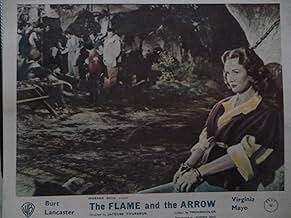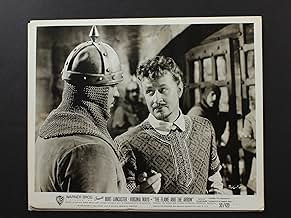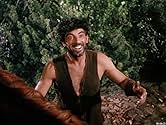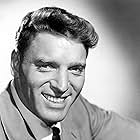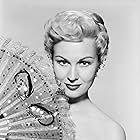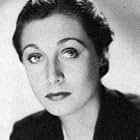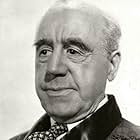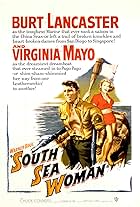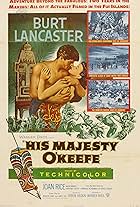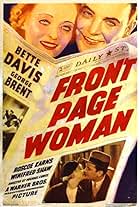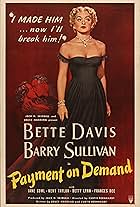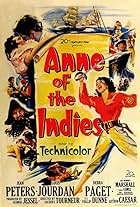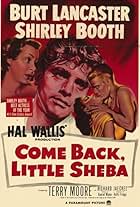IMDb RATING
6.8/10
4.3K
YOUR RATING
Dardo, a Robin Hood-like figure, and his loyal followers use a Roman ruin in Medieval Lombardy as their headquarters as they conduct an insurgency against their Hessian conquerors.Dardo, a Robin Hood-like figure, and his loyal followers use a Roman ruin in Medieval Lombardy as their headquarters as they conduct an insurgency against their Hessian conquerors.Dardo, a Robin Hood-like figure, and his loyal followers use a Roman ruin in Medieval Lombardy as their headquarters as they conduct an insurgency against their Hessian conquerors.
- Nominated for 2 Oscars
- 2 nominations total
Lynn Baggett
- Francesca
- (as Lynne Baggett)
Paul Baxley
- Guard
- (uncredited)
Leon Belasco
- Arturo of Milan
- (uncredited)
- …
Ray Beltram
- Townsman
- (uncredited)
Richard Brehm
- Outlaw
- (uncredited)
George Bruggeman
- Guard
- (uncredited)
- Director
- Writer
- All cast & crew
- Production, box office & more at IMDbPro
Storyline
Did you know
- TriviaNick Cravat, who plays Piccolo, was an acrobat who was teamed with Burt Lancaster before Lancaster became a star. He appears in many of Lancaster's movies. In this one, and in The Crimson Pirate (1952), he plays a mute. The reason was that his thick Brooklyn accent, which he could not lose, would have been wildly out of place in such period pieces.
- GoofsWhen Piccolo is fighting the guardsman in the balcony he flips his sword around and holds the blade with his hand (showing it cannot be sharp) and then whacks the guardsman with the broad side of the blade near the hilt, bending it at least 20-25 degrees.
- ConnectionsReferenced in The John Player Lecture with Burt Lancaster (1972)
Featured review
Lively, colorful period romp in the Warners’ style made in the wake of ADVENTURES OF DON JUAN (1948) – featuring the same villain, Robert Douglas, no less – but actually fashioned after their most successful swashbuckler, THE ADVENTURES OF ROBIN HOOD (1938).
Burt Lancaster – with his acrobatic training and cheerful countenance in full bloom – is perfect casting for the heroic role of Dardo, a kind of Italian Robin Hood (even down to displaying similar prowess as an archer); Virginia Mayo, then, makes for an ideal heroine – like Olivia De Havilland’s Maid Marian, playing a noble woman who’s gradually drawn to the outlaw’s cause. Again, like the 1938 Robin Hood film, we have two villains: Frank Allenby as a tyrant known as “The Hawk” and the afore-mentioned Douglas as a Marquis; the latter’s role is interesting in that, banished by the former for tax evasion, he manages to infiltrate Lancaster’s band (along with his smart companion, a troubadour played by Norman Lloyd) and outwardly reform – but, when the opportunity arises, proceeds to reveal their plan of attack to Allenby!
Other twists and quirks to the Robin Hood formula (the sharp script was written by Waldo Salt, later an Oscar winner for MIDNIGHT COWBOY [1969]!) are the fact that Lancaster’s wife has left him for Allenby - their spirited son has remained with Lancaster, whom he idolizes, but is eventually captured and thought good manners against his will; when Lancaster imprisons Mayo in exchange for his son’s freedom, he keeps her chained by the neck to a tree!; for no apparent reason other than that he's able to, one of Lancaster’s men uses his feet to write ransom notes, etc.; Lancaster is sent to the gallows but, here, he gives himself up rather than being captured and actually fakes his own death!; and the climactic struggle inside the castle, which the gang penetrate incognito (this time dressed-up as a band of strolling players). The obligatory swordfight between Lancaster and Douglas, then, is given a novel touch by being partly set in the dark – the only evident nod to the noir style director Tourneur is best-known for!
The film itself received a couple of Oscar nominations for Ernest Haller’s gorgeous cinematography and Max Steiner’s marvelous score (it too bears a striking resemblance to Erich Wolfgang Korngold’s unforgettable work on THE ADVENTURES OF ROBIN HOOD – as do the castle interiors – but this takes nothing away from the quality of THE FLAME AND THE ARROW itself!). Also worth noting in the cast is Nick Cravat as Lancaster’s mute sidekick: in the star’s days as an acrobat, he had been his partner and would often work with him in films – basically reprising his role here in Lancaster’s next swashbuckler, the seafaring THE CRIMSON PIRATE (1952; incidentally, also surprisingly but vigorously helmed by an expert in film noir, Robert Siodmak). Speaking of the latter, a couple of years back I re-acquainted myself with it via a rental of Warner’s bare-bones DVD edition – but its predecessor/companion piece is, mysteriously, still M.I.A. on disc...
Burt Lancaster – with his acrobatic training and cheerful countenance in full bloom – is perfect casting for the heroic role of Dardo, a kind of Italian Robin Hood (even down to displaying similar prowess as an archer); Virginia Mayo, then, makes for an ideal heroine – like Olivia De Havilland’s Maid Marian, playing a noble woman who’s gradually drawn to the outlaw’s cause. Again, like the 1938 Robin Hood film, we have two villains: Frank Allenby as a tyrant known as “The Hawk” and the afore-mentioned Douglas as a Marquis; the latter’s role is interesting in that, banished by the former for tax evasion, he manages to infiltrate Lancaster’s band (along with his smart companion, a troubadour played by Norman Lloyd) and outwardly reform – but, when the opportunity arises, proceeds to reveal their plan of attack to Allenby!
Other twists and quirks to the Robin Hood formula (the sharp script was written by Waldo Salt, later an Oscar winner for MIDNIGHT COWBOY [1969]!) are the fact that Lancaster’s wife has left him for Allenby - their spirited son has remained with Lancaster, whom he idolizes, but is eventually captured and thought good manners against his will; when Lancaster imprisons Mayo in exchange for his son’s freedom, he keeps her chained by the neck to a tree!; for no apparent reason other than that he's able to, one of Lancaster’s men uses his feet to write ransom notes, etc.; Lancaster is sent to the gallows but, here, he gives himself up rather than being captured and actually fakes his own death!; and the climactic struggle inside the castle, which the gang penetrate incognito (this time dressed-up as a band of strolling players). The obligatory swordfight between Lancaster and Douglas, then, is given a novel touch by being partly set in the dark – the only evident nod to the noir style director Tourneur is best-known for!
The film itself received a couple of Oscar nominations for Ernest Haller’s gorgeous cinematography and Max Steiner’s marvelous score (it too bears a striking resemblance to Erich Wolfgang Korngold’s unforgettable work on THE ADVENTURES OF ROBIN HOOD – as do the castle interiors – but this takes nothing away from the quality of THE FLAME AND THE ARROW itself!). Also worth noting in the cast is Nick Cravat as Lancaster’s mute sidekick: in the star’s days as an acrobat, he had been his partner and would often work with him in films – basically reprising his role here in Lancaster’s next swashbuckler, the seafaring THE CRIMSON PIRATE (1952; incidentally, also surprisingly but vigorously helmed by an expert in film noir, Robert Siodmak). Speaking of the latter, a couple of years back I re-acquainted myself with it via a rental of Warner’s bare-bones DVD edition – but its predecessor/companion piece is, mysteriously, still M.I.A. on disc...
- Bunuel1976
- Jun 5, 2007
- Permalink
- How long is The Flame and the Arrow?Powered by Alexa
Details
- Release date
- Country of origin
- Language
- Also known as
- The Hawk and the Arrow
- Filming locations
- Production companies
- See more company credits at IMDbPro
Box office
- Budget
- $1,600,000 (estimated)
- Gross worldwide
- $6,713
- Runtime1 hour 28 minutes
- Aspect ratio
- 1.37 : 1
Contribute to this page
Suggest an edit or add missing content

Top Gap
By what name was The Flame and the Arrow (1950) officially released in India in English?
Answer




